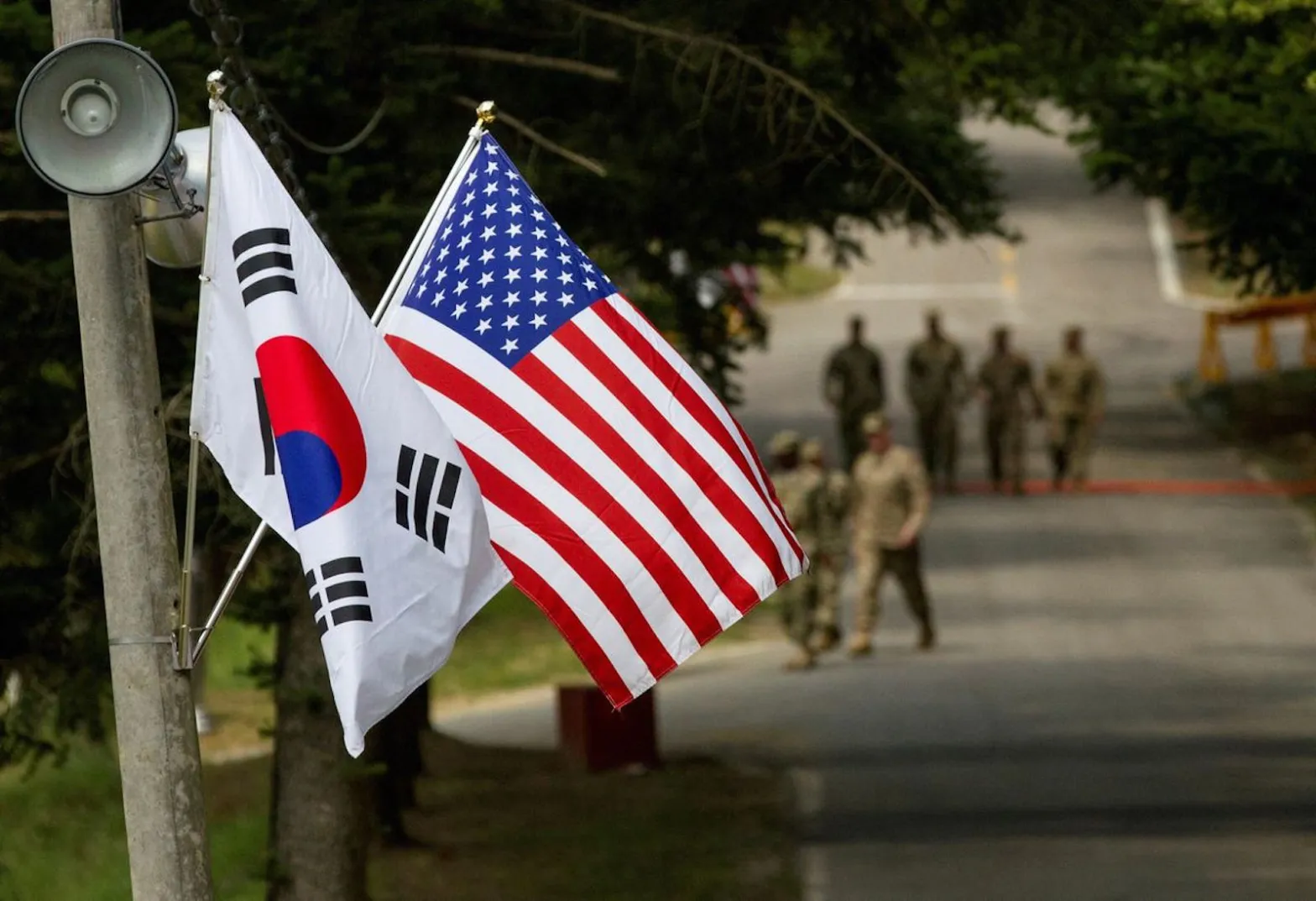Three Key Lessons from Past North Korean Denuclearization Diplomacy
USIP
APLN member Jun Bong-geun argues that it is important to consider North Korea’s security and political concerns in order to achieve the goal of denuclearization. The original article can be found on the USIP website here.
Despite widespread pessimism about the prospects for North Korea’s denuclearization and the utility of denuclearization diplomacy, Washington and Seoul continue to explore denuclearization dialogue with North Korea. In April, President Biden and President Yoon Suk Yeol of South Korea jointly confirmed in the Washington Declaration that, despite their primary focus on enhancing deterrence measures, they “remain steadfast in their pursuit of dialogue and diplomacy with [North Korea], without preconditions, as a means to advance the shared goal of achieving the complete denuclearization of the Korean Peninsula.”
Setting aside whether North Korea is even interested in engaging, if the United States and South Korea hope to reengage with North Korea, they should first ask themselves what their denuclearization strategy is and what they are ready to trade for North Korea’s denuclearization measures. Without answers to these questions, the next set of nuclear negotiations and agreements with North Korea, if it even happens, is likely to fail again.
Here are three key lessons that both capitals should learn to avoid the previous pitfalls and sustain nuclear dialogue and agreements for a nuclear-free Korean Peninsula.
Reinvigorating a Korean Peninsula-Specific Denuclearization Model
Most nuclear experts agree that states seek nuclear armament for security, domestic politics and prestige reasons. They also agree that states tend to stop going nuclear when such reasons no longer exist or when international pressure makes the costs of nuclear development outweigh its benefits. This model can help explain why states such as South Africa, Argentina, Brazil, Ukraine, Kazakhstan and Libya stopped pursuing the nuclear option in the early post-Cold War era.
However, North Korea chose to pursue a nuclear program in the 1990s when most others decided otherwise. Why? First, contrary to other denuclearizing states, North Korea’s security and political incentives for nuclear armament increased dramatically starting in the early 1990s. As North Korea’s security and economy faced collapse in the post-Cold War era, it desperately needed a nuclear deterrent to ensure its state and regime survival.
Second, North Korea could endure and overcome harsh sanctions and pressure unlike most other denuclearizing states. This was possible because the North Korean state and regime were extraordinarily resistant and durable. North Korea’s unique Juche ideology (self-reliance), nationalism and anti-foreign mentality, combined with its hereditary dictatorship and strong, repressive state-control mechanism, made its regime resistant and relatively immune to foreign pressure and sanctions.
And third, North Korea benefited geopolitically from bordering China and Russia, which shielded it from international sanctions and pressure when necessary. These unique circumstances specific to North Korea helped it weather economic and sanctions crises while advancing nuclear development. The United States and South Korea also significantly underestimated North Korea’s will and capability for nuclear development.
Consequently, their denuclearization strategy and diplomacy against North Korea were not adequately designed and implemented to achieve this paramount task. The 1994 U.S.-North Korea Agreed Framework and 2003-2008 Six-Party Talks appeared on the right track, having included many reciprocal measures for denuclearization steps, such as U.S.-North Korea and inter-Korean diplomatic normalization, regional peace and security cooperation, and energy and economic assistance. However, these agreements ended prematurely due to mutual perceptions of nonperformance and duplicity. Later U.S. efforts to disarm North Korea through a more pressure-based approach, which seemed to work against other countries, have thus far proven to be ineffective as North Korea continues to accelerate and advance its nuclear weapons program.
Therefore, it is necessary to reinvigorate and intensify a more Korean Peninsula-specific denuclearization strategy. This strategy should begin with designing a denuclearization road map that outlines U.S. and South Korean “corresponding measures” to be exchanged with North Korea’s denuclearization measures in a step-by-step manner. The road map does not need to start from scratch. The Agreed Framework, the Six-Party Talks’ joint statements and the 2018 Singapore Statement provide useful references that can serve as a foundation. These reciprocal exchanges of measures should also incorporate additional developments from the last decade, including sanctions relief and arms control, and proceed according to the principles of staged implementation, action-for-action and exchange of equal values.
Finally, based on the advice of the abovementioned nuclear development theory, it is imperative to listen to North Korea’s security and political concerns in order to achieve the denuclearization goal. In this regard, in parallel with North Korea’s denuclearization steps, the United States and South Korea should prioritize two corresponding measures, among others: U.S.-North Korea diplomatic normalization and Korean Peninsula peace regime building, which includes sanctions relief, reducing U.S.-South Korean joint military exercises and ending U.S. strategic asset deployments to the Korean Peninsula.
Implementing a Sustainable North Korea Policy
North Korea analysts often claim that various North Korea strategies — from the sunshine engagement policy to strategic patience to neglect to maximum pressure to regime change — were used to seek North Korean denuclearization, and there is nothing more left to try. They were right when they said that everything had been tried. But what has not been tried: Giving an effective policy sufficient time and resources to produce the desired results.
A complex task, like denuclearization involving countries that are mutually hostile and distrustful, requires consistent, sustained effort. However, the temporary nature of the U.S. and South Korean governments has made this difficult. The traditional dictum that “politics stops at the water’s edge” has not applied to North Korea policy in either Seoul or Washington. Both governments have tended to change their North Korea policies abruptly in accordance with the political inclinations of each administration in power, moving back and forth between different forms of pressure, engagement, incentives and neglect. The changes in government also mean that existing nuclear agreements with North Korea have oftentimes been reversed or neglected. In addition, the coordination of North Korea policies between Seoul and Washington has often been discordant when their respective approaches clashed.
Political disagreements on North Korea policy between major political parties in both capitals still run wide and deep. Therefore, we can predict that future agreements with North Korea, if they occur, could very well break down again.
Therefore, it is imperative for both Seoul and Washington to build, as much as they can, a domestic political consensus toward an effective Korean Peninsula-specific policy. This will be difficult but there are past instances of consensus. The current U.S. Congress, despite the polarization, largely seems to agree, wrongly or rightly, that sanctions are the best way to coerce North Korea into better behavior. Even in South Korea, which has similar levels of polarization, including on North Korea policy, there is consensus that South Korea should always take the lead on matters related to the Korean Peninsula.
It is also necessary for both the U.S. and South Korean governments to reaffirm their common vision of a nuclear-free, peaceful peninsula and to solidify a bilateral policy coordination process to scrutinize and review policy changes. This demand will be very difficult to meet considering the current political reality in both capitals. In that case, the two governments must acknowledge that the failure to sustain an effective North Korea policy consistently will lead to the growth of both the North Korean nuclear arsenal and the chances of nuclear use on the peninsula.
Dealing with North Korea as It Is
Another critical mistake in past denuclearization diplomacy was that the United States and South Korea greatly underestimated the durability and tenacity of the North Korean state and regime. They believed that the outdated North Korean government — communist, totalitarian and dynastic, with a state-controlled economy — was doomed to fail in the post-Cold War era. Considering the disintegration of the Soviet Union, the transformation of former communist states in Europe and East Asia, North Korea’s economic crisis and mass famine, and the prevalent “end of history” theory, this was not an unreasonable expectation.
As a result, U.S. and South Korean leaders were reluctant to engage with and follow through on commitments with North Korea. It was more convenient and rational for them to choose strategies based on neglect, strategic patience and pressure, while hoping for the North Korean regime’s collapse or behavioral change in the near term. For example, when Washington promised to provide North Korea with light-water-reactor-based nuclear power plants, replacing its proliferation-prone graphite moderated reactor, under the 1994 Agreed Framework, many analysts thought that North Korea would not outlast the construction of the nuclear plants. Failing to garner domestic political support and expecting North Korea’s collapse, Washington wasted five years before finally signing the main turnkey contract to build the nuclear power plants in December 1999. These actions made North Korea doubt whether the United States was serious about keeping its promises.
When the Bush administration learned that North Korea was developing a clandestine uranium enrichment program, it chose to nullify the Agreed Framework despite Seoul’s petition to keep it. It also initially decided to stop engaging with an “axis of evil” member in North Korea, and debated policies for regime change before committing to the Six-Party Process in 2003 after North Korea withdrew from the non-proliferation treaty.
The Obama administration also adopted a “strategic patience” approach that was imbued with hopes for regime collapse. Then-President Barack Obama even revealed in a 2015 YouTube interview that “you will see a regime like [North Korea] collapse . . . it is very hard to sustain that kind of brutal authoritarian regime in this modern world. Information ends up seeping in over time and bringing about change, and that’s something that we are constantly looking for ways to accelerate.”
Today, the outcome of such an approach is the opposite. Although the United States sanctioned, pressured, isolated and waited for North Korea’s collapse or at least its behavioral change, the regime and its nuclear capability strengthened every year. It turned out that North Korea, not the United States, had capitalized on the bought time to become the ninth nuclear-armed state. If the U.S. and South Korean governments had assessed earlier that North Korea was persistent and capable of nuclear armament, their North Korea policy might have been different, more focused and sincere.
Certainly, North Korea could eventually change or collapse. The problem is that no one knows when or how. It could be one year, 10 years, 30 years, or never. In the meantime, the international community must face and deal with North Korea as it is today. If not, it is most probable that North Korea will continue to exist — and its nuclear arsenal will continue to expand as it has over the past 30 years.
Image: President Joe Biden and South Korean President Yoon Suk Yeol during a visit of the Air Operations Center on Osan Air Base in South Korea. October 19, 2022. (Doug Mills/The New York Times)



![[Interview] Accidental Clash on Korean Peninsula Could Touch Off Nuclear War](https://cms.apln.network/wp-content/uploads/2024/01/2217059957580461.jpeg)
